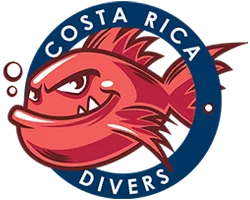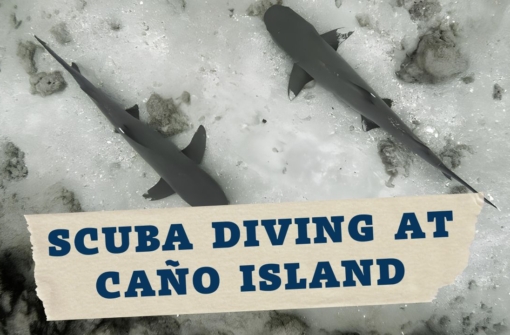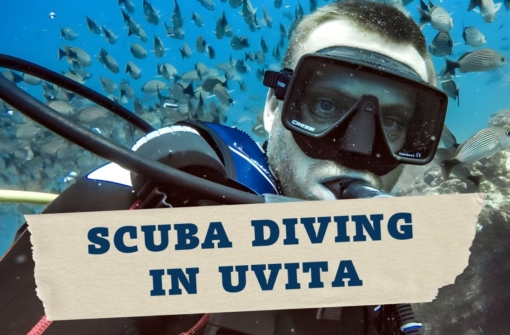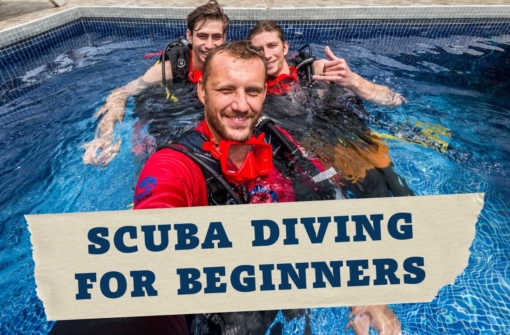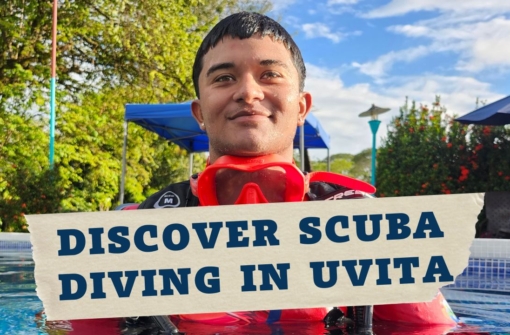Scuba diving in Costa Rica is truly a remarkable experience, and I’m here to provide you with all the information you need about this exhilarating activity. Whether you’re a beginner or an advanced diver, Costa Rica offers a wide range of diving opportunities that will leave you in awe. From enchanting islands to captivating sunken wrecks, and encounters with magnificent mantas and sharks, the underwater world of Costa Rica holds a treasure trove of sights to behold.
Now, let’s address your questions about the best diving spots in Costa Rica and how to organize your trip. Rest assured, my knowledge stems from running one of the most successful dive centers in the country. Our satisfied clients continually entrust us with their diving experiences, which attests to our expertise in the field. We specialize in organizing dive trips and offering PADI courses for divers of all levels. Today, I’m delighted to share our wealth of knowledge about scuba diving in Costa Rica with you. Shall we dive in?
Table of Contents
Planning a trip to Costa Rica requires careful consideration, especially when you have limited time and want to make the most of your experience. It’s essential to arrange accommodation, transportation, and prioritize the attractions you wish to visit to ensure a well-organized and efficient trip. While it’s common to come across promotional content on dive center websites, I understand your desire for an unbiased and informative study that provides specific details about scuba diving in Costa Rica.
Rest assured, my aim is to provide you with objective and factual information about diving in Costa Rica, catering specifically to divers like yourself. I want to offer a comprehensive overview of the topic, allowing you to plan your own diving adventures and choose the diving locations that best suit your preferences and requirements. This study will focus on delivering valuable insights and practical advice, enabling you to make informed decisions without any marketing hype. Let’s delve into the world of scuba diving in Costa Rica, offering you the information you seek as a fellow diver.
Costa Rica is a relatively small country, yet it possesses a remarkable abundance of animal and plant species. The nation has made significant efforts to safeguard its natural treasures, resulting in approximately 25% of Costa Rica’s land area being designated as protected areas. Numerous national parks in Costa Rica serve as guardians of its natural heritage, ensuring the preservation of both the terrestrial and underwater ecosystems. The combination of stringent conservation measures, coupled with the country’s exceptional biodiversity and warm water temperatures, creates ideal conditions for diving enthusiasts.
Undoubtedly, Costa Rica diving is an experience that justifies the investment. Based on my personal observations, many of our clients who have prior diving experience in Europe express a common sentiment after their journey to Isla del Caño—they realize how truly exhilarating diving can be. The underwater wonders of Costa Rica never fail to captivate and provide an entirely new level of enjoyment and appreciation for the sport.
Costa Rica is fortunate to have access to two vast bodies of water: the Pacific Ocean to the west and the Caribbean Sea to the east. While diving is possible year-round in both regions, the Pacific side is generally considered superior to the Caribbean in terms of diving experiences. On the Pacific side, you will discover two underwater treasures: Cocos Island and Caño Island. These two sites are recognized as UNESCO World Natural Heritage Sites and are integral parts of Costa Rica’s extensive national park system.
The majority of dive sites on these islands are located within protected areas, ensuring the preservation of their pristine natural beauty. It is safe to assert that Cocos Island and Caño Island offer some of the finest diving opportunities in Costa Rica. However, it is worth noting that there are numerous other equally remarkable dive sites throughout the country. Most dive sites can only be accessed by boat and require organized tours. Nevertheless, there are also dive sites that are accessible from the shore. Shore diving can be enjoyable, particularly during peak seasons, and offers greater accessibility. For those seeking cave diving or high-altitude diving experiences, it is a separate and specialized subject that merits its own dedicated discussion.

The Pacific Coast of Costa Rica is highly developed and offers convenient accessibility. However, this does not imply that you will encounter overwhelming crowds or a lack of natural beauty. When it comes to scuba diving on the Pacific side, one cannot overlook the crown jewel of dive sites, Cocos Island. Moreover, the Pacific Coast is easily accessible, with many of the listed dive sites located within a few hours’ drive from San Jose International Airport.
Cocos Island, located in the Pacific Ocean approximately 300 miles off the coast of Costa Rica, is renowned as one of the world’s premier dive sites. This uninhabited island is covered in dense jungle and serves as a national park, with only park rangers residing there. Diving in Cocos Island offers a paradise for divers, particularly those with advanced skills. The site boasts an incredible variety of marine life, including various shark species, manta rays, humpback whales, and vast schools of fish. However, it is important to note that the strong currents and waves make it necessary for divers to possess advanced experience. The use of nitrox is recommended but of course requires prior training and certification.
Given its remote location, visiting Cocos Island involves embarking on a multi-day expedition, residing on a liveaboard vessel, and obtaining a special permit for diving near the island. These expeditions can be quite expensive. The water temperature remains between 24 to 29°C (75-84°F) throughout the year, while visibility ranges from 10 to 20 meters (30-65 feet). The optimal time to visit Cocos Island is from December to May, although rainfall can occur during this period. It is noteworthy that the esteemed diving authority and renowned personality, Jacques Cousteau, regarded Cocos Island as the world’s finest diving destination. So, if you ever have the opportunity to visit, do not hesitate for a moment.
Furthermore, it is rumored that a vast pirate treasure is hidden on this island…
| LOCATION | VISIBILITY | HIGH SEASON | DIFFICULTY | DIVE COST | OUR REVIEW |
|---|---|---|---|---|---|
| Isla del Coco | 10 – 20m | December to May | ❗️❗️❗️❗️❗️ | 💲💲💲💲💲 | ⭐⭐⭐⭐⭐ |

Isla del Caño, the second most beautiful island in Costa Rica, offers a more accessible diving experience compared to Cocos Island. It is located just an hour away from Uvita, making it a convenient destination. Many divers who have visited both Cocos Island and Isla del Caño describe the latter as its smaller sister. The diving season at Isla del Caño extends throughout the year, with the best conditions typically occurring from December to May. Divers of all levels, from beginners to advanced, can enjoy the underwater wonders here. The water temperature ranges from 24°C to 30°C, and visibility varies between 10 to 20 meters.
One of the advantages of Isla del Caño is the opportunity to explore the island between dives. You can relax on the beach or take a short hike to the viewpoint, adding to the magical experience of the island. As a natural biological reserve, Isla del Caño is home to a diverse range of fish species, manta rays, sharks, and moray eels. Dolphins and whales can also be spotted in the surrounding waters. It is truly one of the best dive sites in Costa Rica and offers excellent opportunities for beginners. For more detailed information about Isla del Caño, you can refer to our other article: “Isla del Caño – tourist information.”
While my perspective may be slightly biased due to our frequent diving excursions to Isla del Caño, it truly stands out as the best dive site in Costa Rica. Not only can you witness magnificent marine creatures, but the site also caters to divers of different skill levels, including beginners, intermediates, and adventurers. Moreover, the snorkeling experience at Isla del Caño is among the finest in Costa Rica, making it an exceptional opportunity for the whole family to enjoy the same trip, regardless of whether they choose to explore underwater or remain on the surface.
| LOCATION | VISIBILITY | HIGH SEASON | DIFFICULTY | DIVE COST | OUR REVIEW |
|---|---|---|---|---|---|
| Isla del Caño | 10 – 20m | December to May | ❗️❗️❗️ | 💲💲💲 | ⭐⭐⭐⭐⭐ |

Marino Ballena National Park, located in Uvita, serves as the starting point for snorkeling, scuba diving, and whale watching trips. It holds the distinction of being Costa Rica’s first marine national park. The park is renowned for its humpback whale sightings during their annual migration, as it serves as a vital location where they nurture and teach their young. This makes Marino Ballena Park a popular destination for tourists interested in whale watching.
However, whale watching is not the only attraction. The park also offers several remarkable diving sites that will captivate you with their beauty. Since the park is situated along the coastline and at the mouths of various rivers, the best time for diving here is during the dry season. One of the advantages of scuba diving in Marino Ballena is that most dive sites can be reached within a few minutes from the beach. This significantly speeds up the overall trip, allowing for a slightly later start, particularly for those who prefer to sleep in the morning.
However, it’s important to note that diving in Uvita has one drawback. During the low season, characterized by heavy rainfall, visibility in the water decreases significantly. This is due to the presence of numerous rivers in this picturesque area, with their waters flowing directly into the ocean. Consequently, sediments, soil, clay, and dead vegetation are carried into the ocean along with the river waters, making diving in Uvita nearly impossible. Fortunately, Isla del Caño is just a short boat ride away from the Uvita beach, providing an excellent alternative for diving enthusiasts.
| LOCATION | VISIBILITY | HIGH SEASON | DIFFICULTY | DIVE COST | OUR REVIEW |
|---|---|---|---|---|---|
| Marino Ballena | 10 – 15m | January to May | ❗️ | 💲💲 | ⭐⭐⭐ |

Catalina Island, located in the Guanacaste province of Costa Rica, is another renowned destination for scuba diving. This chain of volcanic rock formations extends to a depth of nearly 40 meters below the water’s surface. The dive sites around Catalina Island offer opportunities to encounter impressive marine creatures, such as mantas. Diving at Catalina Island is available throughout the year, thanks to the region’s tropical climate and consistently warm water temperatures. The water temperature ranges from 24 to 29 degrees Celsius (75-85 degrees Fahrenheit).
Visibility underwater is generally good throughout the year, and the water depths range from 6 to 23 meters. However, it’s important to note that strong currents are common in this area. Therefore, it is advisable to hold at least an advanced diver’s certification if you plan to dive in the Catalina Islands. To experience scuba diving at Catalina Island, participating in an organized diving tour is necessary. Although the island is not far from the mainland, the trip typically requires a full day as two dives are usually conducted. Numerous dive operators offer dive trips to Catalina Island, making it easy to find suitable options. The popular starting points for diving tours to Catalina Island are Tamarindo and Playas del Coco.
| LOCATION | VISIBILITY | HIGH SEASON | DIFFICULTY | DIVE COST | OUR REVIEW |
|---|---|---|---|---|---|
| Catalina Islands | 5 – 20m | September to March | ❗️❗️❗️ | 💲💲💲 | ⭐⭐⭐⭐ |
The Bat Islands, located within the Santa Rosa National Park, are renowned as a world-class diving destination. As a protected area, this site offers diverse marine life and unique diving experiences. The maximum depths at the Bat Islands vary depending on the specific dive site, ranging from 18 to 35 meters (60 – 130 feet). Visibility in the water can range from 6 to 30 meters (18 – 100 feet). It’s important to note that diving at the Bat Islands is recommended for experienced and skilled divers. The presence of strong underwater and surface currents requires diving expertise. Due to the challenging surface conditions, quick descents may be necessary, leaving little time for hesitation. Therefore, a minimum of advanced diver certification is strongly advised.
While the Bat Islands provide an exceptional diving experience, it is essential to understand that it may not be suitable for non-diving companions or children. The primary purpose of visiting this site is for diving enthusiasts. To reach the Bat Islands, you will need to join an organized diving trip. The ideal starting point is Playa del Coco, where several dive tour operators are available to assist you. The journey from the mainland to the islands typically takes approximately one hour.
| LOCATION | VISIBILITY | HIGH SEASON | DIFFICULTY | DIVE COST | OUR REVIEW |
|---|---|---|---|---|---|
| Bat Islands | 10 – 20m | May to October | ❗️❗️❗️❗️ | 💲💲💲 | ⭐⭐⭐⭐⭐ |
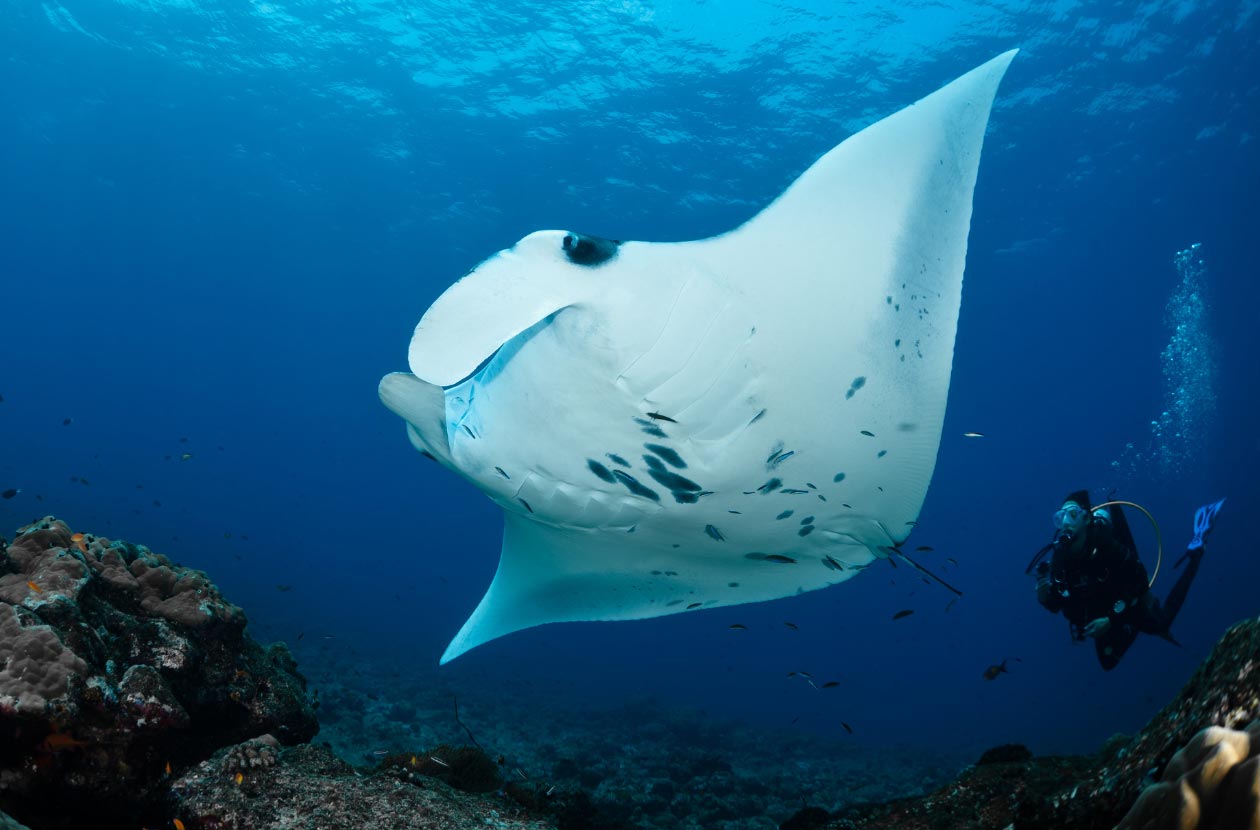
Diving in Playas del Coco primarily involves shore diving or short boat trips to nearby sites. It’s important to note that coral is not prevalent in this area, and the water temperature is colder compared to the southern regions of Costa Rica. The dive sites near the shore generally have minimal or no current, making them suitable for beginner and intermediate divers.
The diving season in Playas del Coco runs from December to April, coinciding with the dry season in Costa Rica. However, it’s worth mentioning that this region experiences hot and dry weather, particularly during the summer season. If you’re not diving, you’ll likely seek relief from the heat in a pool or with air conditioning. Located in a sheltered bay, Playas del Coco generally has calm waters. The visibility underwater can vary, reaching several meters during the high season. However, during the low season, diving conditions may be less appealing. Nevertheless, these are still tropical waters where you can encounter a variety of marine life throughout the year.
| LOCATION | VISIBILITY | HIGH SEASON | DIFFICULTY | DIVE COST | OUR REVIEW |
|---|---|---|---|---|---|
| Playas del Coco | 5 – 10m | December to April | ❗️ | 💲💲 | ⭐⭐ |
Jaco is a small but well-developed city situated on the ocean, just a 2-hour drive from San Jose International Airport. While scuba diving in Jaco may not be as prominent as in other destinations, it is certainly worth exploring. The area offers some intriguing dive sites near the beach, which are perfect for beginner and intermediate divers. One advantage of diving in Jaco is that it can be done from the shore, eliminating the need for boat transportation.
While Jaco is often associated with its vibrant nightlife and bustling parties, it offers more than just that. If you’re seeking activities beyond the party scene, scuba diving in Jaco should be on your list. It provides a refreshing and fulfilling experience amidst the coastal beauty.
Consider Jaco as an excellent location to participate in a “discover diving” program, which allows you to experience underwater diving for the first time if you haven’t done so before. The proximity of dive sites and calm waters make it an ideal place to have your initial encounter with diving equipment. To ensure a safe and enjoyable experience, it’s recommended to seek out a reputable instructor and preferably a PADI-accredited dive center.
| LOCATION | VISIBILITY | HIGH SEASON | DIFFICULTY | DIVE COST | OUR REVIEW |
|---|---|---|---|---|---|
| Jaco | 5 – 10m | December to April | ❗️ | 💲💲 | ⭐⭐⭐ |
Isla Tortuga is primarily known as a popular snorkeling destination due to its warm and clear waters. However, it also holds a surprise for divers – underwater wrecks. Unlike other areas further south, Isla Tortuga offers the opportunity to explore these wrecks, adding an exciting element to scuba diving in Costa Rica.
Some of the wrecks that have been thoroughly explored and are accessible to divers include the Caroline Star, a 30-meter vessel, the Coronel Alfonso Monge, a 25-meter wreck, and the Franklin Chang Diaz, a 28-meter Coast Guard ship. These wrecks provide a unique and diverse experience for divers of all skill levels.
Getting to Isla Tortuga for diving can be a bit challenging as diving services on the island are limited. While there are numerous snorkeling trips available from places like Puntarenas, finding dive trips specifically for Isla Tortuga can be best done from Jaco and its dive centers. Although Isla Tortuga may not be as well-known on the diving map of Costa Rica, it is certainly worth considering when planning your trip.
| LOCATION | VISIBILITY | HIGH SEASON | DIFFICULTY | DIVE COST | OUR REVIEW |
|---|---|---|---|---|---|
| Isla Tortuga | 10 – 20m | December to May | ❗️❗️ | 💲💲💲 | ⭐⭐⭐⭐ |
We’ve already covered the top diving sites on Costa Rica’s Pacific side, so let’s now explore what scuba diving opportunities await us on the Caribbean side. The Caribbean region of Costa Rica may not be as developed as its Pacific counterpart, but it offers its own unique advantages and drawbacks. If you’re seeking a more straightforward yet adventurous diving experience, you’ll certainly find something for you on the Caribbean side.
However, it’s important to note that accessing the Caribbean side can be challenging due to limited transportation options. There is only one road that connects the region, and it is frequently under repair and congested with trucks heading to the port of Limon. While public transportation is available, it may require patience as the service in this area is not very reliable.
Gandoca Manzanillo Wildlife Refuge is situated along Costa Rica’s southern Caribbean coast near the border with Panama. This protected area encompasses a humid tropical forest and serves as a sanctuary for numerous endangered plant and animal species. However, it’s important to note that this region is still in the early stages of development, and reaching the refuge can be time-consuming. Therefore, it’s essential to plan your dive excursion carefully.
Considered by many as the premier snorkeling and diving destination on Costa Rica’s Caribbean coast, Gandoca Manzanillo Wildlife Refuge boasts stunning coral reefs and picturesque coves teeming with marine life. Prepare to encounter remarkable creatures such as sea turtles, manatees, crocodiles, and dolphins during your underwater exploration.
Now, let’s discuss transportation options. Getting to Gandoca Manzanillo Wildlife Refuge can be both easy and challenging. If you have access to your own vehicle, it will take several hours to reach the refuge from San Jose. However, keep in mind that although the route is straightforward, it’s not necessarily a fast journey. Road repairs and traffic congestion caused by trucks heading to the port of Limon can significantly slow down travel time. Patience is key. On the other hand, if you rely on public transportation, reaching Gandoca Manzanillo Wildlife Refuge will be more time-consuming. Nevertheless, the incredible scuba diving opportunities that await you at this refuge make the effort worthwhile.
| LOCATION | VISIBILITY | HIGH SEASON | DIFFICULTY | DIVE COST | OUR REVIEW |
|---|---|---|---|---|---|
| Gandoca Manzanillo | 5 – 15m | February to April | ❗️❗️ | 💲💲💲 | ⭐⭐⭐⭐ |
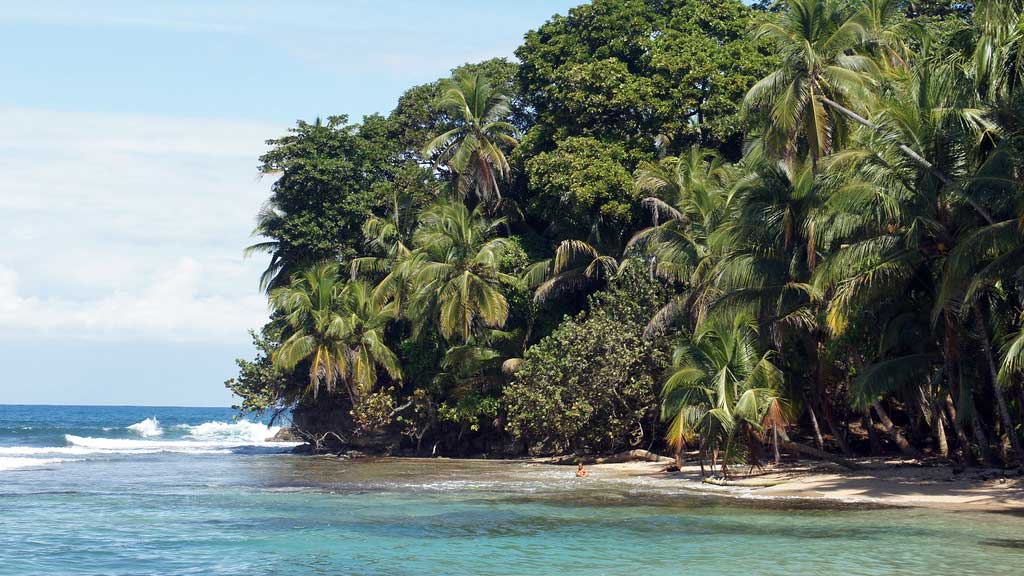
If you get the chance, make your way to the eastern part of Costa Rica, where you’ll find the country’s sole magnificent coral reef situated off the coast of Cahuita National Park. Despite suffering severe damage from the 1991 earthquake, this reef is teeming with over 123 species of fish, 140 species of mollusks, and 35 species of coral.
In the nearby town of Puerto Viejo, you’ll find several places where you can rent diving equipment. The reef offers three primary dive sites: Punta Uva, Gandoca, and Cahuita National Park. Apart from the awe-inspiring marine life, Cahuita Reef is also home to two shipwrecks. Additionally, near the shoreline of Cahuita Point, divers can delight in the sight of brain and staghorn corals. While the dives may not be very deep, that’s not the focus here. As I mentioned earlier, the main highlight of diving in Cahuita is the coral reef itself, which is truly a sight to behold.
Wondering how to reach this destination? Similarly to the previous point, if you have a car, it will only take a few hours and a little patience to indulge in scuba diving adventures in Cahuita. However, if you don’t have a car, you can embark on the exciting adventure of using public transportation.
| LOCATION | VISIBILITY | HIGH SEASON | DIFFICULTY | DIVE COST | OUR REVIEW |
|---|---|---|---|---|---|
| Cahuita Reef | 5 – 15m | February to April | ❗️ | 💲 | ⭐⭐ |
When you venture to Uvita Island, you’ll find it to be a captivating dive site for several reasons. The crystal-clear waters of the Caribbean coast offer a vibrant marine ecosystem to explore. As you descend beneath the surface, you’ll have the opportunity to witness the rich underwater world that thrives in these tropical waters.
One of the highlights of diving on Uvita Island is the chance to encounter two sunken wrecks. These submerged vessels not only add an element of intrigue to your dive but also serve as artificial reefs, attracting a diverse array of marine life. Exploring the wrecks allows you to observe the fascinating interplay between nature and history, as coral formations have developed on the decaying structures, providing shelter and sustenance for various marine species.
Another intriguing aspect of Uvita Island is the historical significance attached to it. It is believed by some that Christopher Columbus landed on this very island during his famous voyage of “discovering” America. Though the exact location of his arrival is a subject of debate, the idea of diving in the waters where Columbus may have anchored his ship is undeniably alluring. It’s a chance to immerse yourself in a piece of history and experience the same surroundings that captivated the famous explorer centuries ago.
To reach Uvita Island, you can follow the same transportation options I mentioned previously. If you have access to a car, it will provide a convenient means of getting to the nearby town of Limon. From there, you can arrange for a boat or join a diving tour that can take you to Uvita Island and guide you through its underwater wonders.
Diving on Uvita Island offers a unique blend of natural beauty, historical intrigue, and the thrill of exploring sunken wrecks. Whether you’re an avid diver or simply curious about immersing yourself in the world beneath the waves, Uvita Island promises an unforgettable experience that combines adventure and discovery.
| LOCATION | VISIBILITY | HIGH SEASON | DIFFICULTY | DIVE COST | OUR REVIEW |
|---|---|---|---|---|---|
| Isla Uvita | 5 – 15m | February to April | ❗️❗️ | 💲💲 | ⭐⭐⭐ |
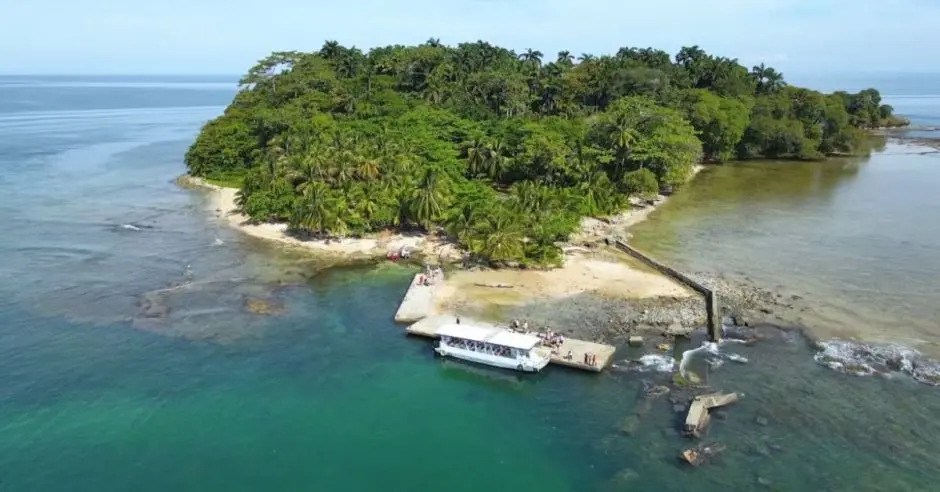
One of the most common questions and misconceptions about diving in Costa Rica revolves around the country’s rainy season. The rainy season typically occurs during the middle of the calendar year, coinciding with the vacation period in Europe, for example. This raises concerns about whether it’s worthwhile to plan a scuba diving trip to Costa Rica during this time or if it would be a waste of time and money.
Let’s clear this up once and for all: it does rain during the rainy season! But does that mean it’s not worth visiting Costa Rica for diving? Quite the opposite! Diving in Costa Rica during the rainy season offers numerous advantages, although it does depend on the specific dive site. Along the coastal areas, visibility can be severely reduced, making diving impractical. However, when it comes to the islands, especially those farther from the mainland, the story is different. In fact, diving during this period can be even better than in the high season.
To provide an example, Marino Ballena is not ideal for diving during the rainy season due to poor visibility. However, Isla del Caño, located about an hour away from the mainland, becomes very appealing during this time. I would even go so far as to say that some of the best dives I’ve had and the most abundant marine life I’ve witnessed occurred during the rainy season. So, when is the best time to dive in Costa Rica? The answer is simple: anytime, as long as you plan it wisely.
Choosing the right dive site is crucial. By selecting islands and more remote locations during the rainy season, you can have a fantastic diving experience despite the weather. Don’t let the rain deter you from exploring the underwater wonders of Costa Rica. With proper planning and site selection, you can enjoy a memorable time even amidst the rain. I hope this clarifies the question about the rainy season and scuba diving in Costa Rica. If you have any more inquiries or need further assistance, feel free to ask!
As previously mentioned, Costa Rica is a country brimming with remarkable wildlife and stunning flora. This holds true for its oceans and the captivating marine life beneath the surface. Here, I will highlight just a few of the animal species you can expect to encounter while scuba diving in Costa Rica.
These are just a few examples of the incredible marine life that awaits you while scuba diving in Costa Rica. Prepare to be enchanted by the diverse array of animals and immerse yourself in the wonders of the underwater world. If you have any further inquiries or require additional information, feel free to ask!
Now that you’re aware of the best dive sites, the underwater wonders to expect, and the ideal time period for your trip to Costa Rica, it’s time to plan your budget and understand the cost of diving in the country. However, determining the exact prices can be a bit challenging, as they vary significantly between different dive operators and locations. So, what factors influence the prices of diving and package tours in Costa Rica?
While there are numerous factors at play, I’ll provide you with a glimpse behind the scenes by offering a few examples:
It’s important to note that these examples are not exhaustive, and the prices of diving in Costa Rica can vary significantly based on these and other factors. To get accurate and up-to-date pricing information, it’s recommended to research and contact specific dive operators or consult with a travel agent who specializes in scuba diving trips to Costa Rica.
By understanding these factors, you can better plan your budget and make informed decisions when it comes to diving in Costa Rica. Should you require further assistance or have any additional questions, please feel free to ask!
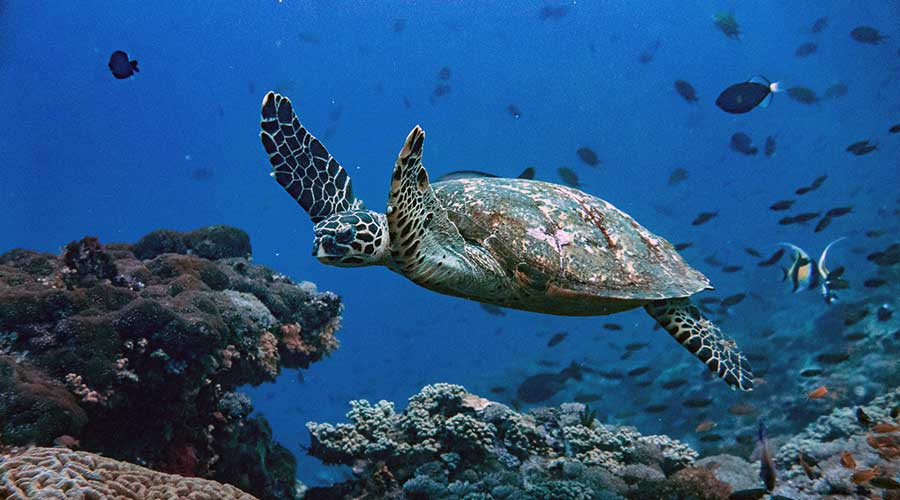
To conclude this comprehensive guide on scuba diving in Costa Rica, I would like to offer some practical advice. As we have discussed, most of the dive sites mentioned require boat transportation and organized dive tours. It is essential to keep in mind that when we venture into the ocean, we become guests in a world governed by nature’s unpredictability.
While diving in Costa Rica offers an exciting holiday experience, it’s crucial to acknowledge the unpredictable nature of the underwater realm and the potential for various adventures. Though accidents are rare, it is essential to be prepared, as they can occur. With that in mind, there are a few key considerations to bear in mind when selecting a dive operator:
Of course, don’t get me wrong, it doesn’t mean that only the biggest dive centers are trustworthy and the smaller ones not so much. Trustworthiness is not solely determined by the size of a dive center. It’s important to note that the responsibility of diving is shared between the operator and the customer. When you engage in diving activities, you enter into a contractual agreement, acknowledging the associated risks. Therefore, it is advisable to conduct some checks before making a decision. Ultimately, it’s your choice where you spend your money.
Throughout this article, we have provided a comprehensive overview of scuba diving in Costa Rica, covering various dive sites and how to reach them. Each location offers unique experiences, and while it would be ideal to explore them all, we understand time constraints. To assist you in choosing the best diving experience in Costa Rica, I would be glad to offer guidance.
Now, one might argue that my perspective as the manager of Costa Rica Divers might be biased, as my aim is to promote our services. However, consider this: would we establish a dive center from scratch in a location lacking favorable conditions for this sport? The answer is likely no. Therefore, if I were to recommend the absolute best place to dive in Costa Rica, I would point to Isla del Cano.
If you have any questions, I encourage you to browse through our blog, where you’ll find numerous helpful articles and studies. Additionally, please feel free to contact our office for further details. Lastly, I extend an invitation to visit Uvita and our dive center. We would be delighted to showcase the wonders of scuba diving in Costa Rica and demonstrate why it is renowned as one of the world’s premier diving destinations. Should you require any further information or assistance, please don’t hesitate to reach out.
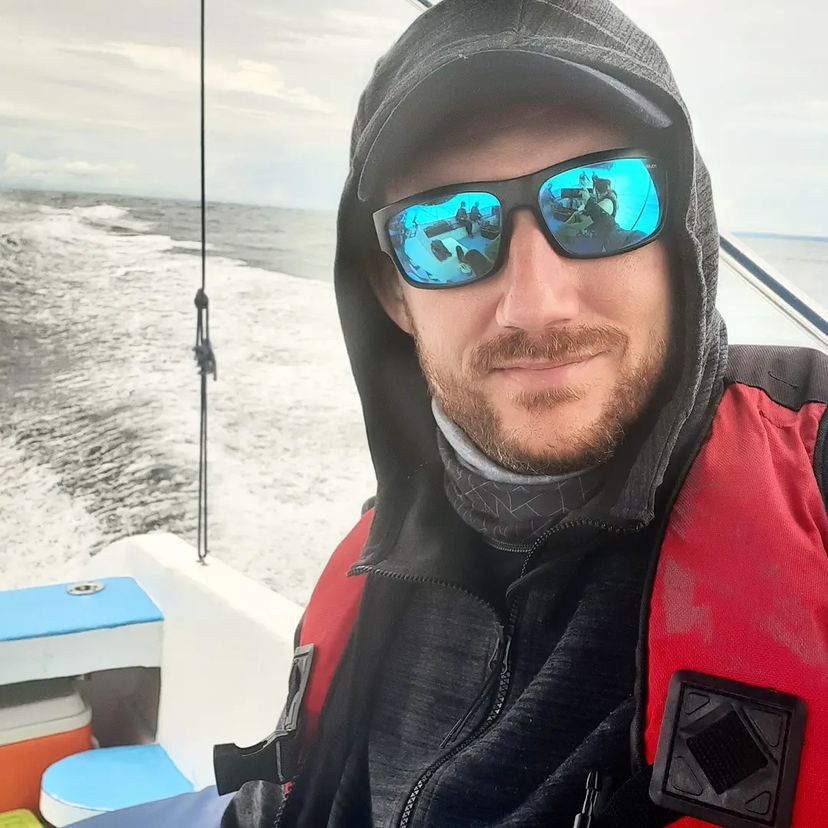
My life has always been linked to sports commonly considered extreme. I once fell in love with big wall climbing, just as I am now in love with scuba diving. I climbed mountains, explored caves and took part in exploration expeditions. Through these experiences, I saw a large chunk of the world and learned a lot. Now I have been a professional diver and a scuba instructor for many years, and Costa Rica has become my second home. Check also my expedition project: @goexplorewith.me
Do you have a good insurance?
Accidents can happen even in paradise and that sucks. That’s why it’s so important to have good insurance to keep you covered under and above the water.

